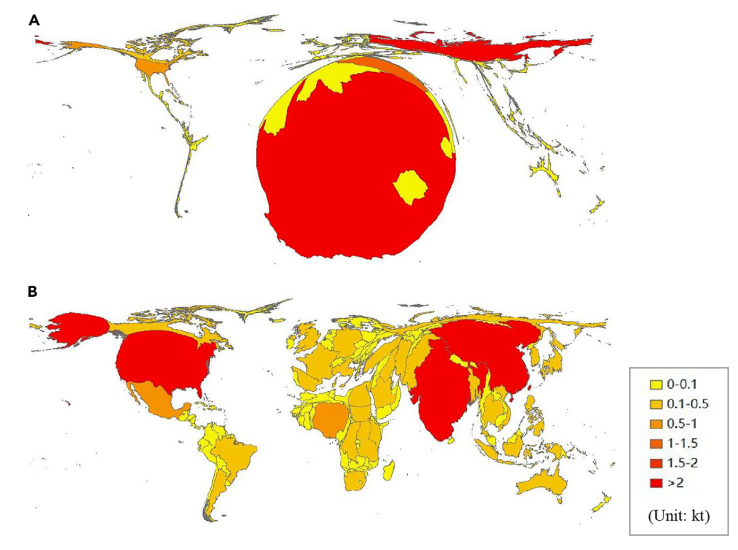With the support from National Natural Science Foundation of China (71690241, 71810107001, 71774100), a joint research group led by Prof. Yong Geng, Shanghai Jiao Tong University, Han Hao, Tsinghua University, and James Tate, University of Leeds, has made significant progress in the field of critical metal sustainability management. Their recent paper entitled “Securing Platinum-Group Metals for Transport Low-Carbon Transition” was published in One Earth. The link of the paper is http://www.cell.com/one-earth/fulltext/S2590-3322(19)30018-1. Another recent paper entitled “Impact of transport electrification on critical metal sustainability with a focus on the heavy-duty segment” was published in Nature Communications. The link of the paper is http://www.nature.com/articles/s41467-019-13400-1.
Lithium, cobalt, nickel, platinum group metals, among other critical metals, are strategic metal resources that play indispensible roles in the next-generation low carbon transport technologies represented by electric vehicles and fuel cell vehicles. Driven by global low-carbon transition, the demand on these critical metals from the transport sector is expected to be dominant in the coming decades. Given the fact that the geographic distributions of these critical metals are highly concentrated, the low-carbon transition of the transport sector is likely to impose significant challenges on resource sustainability, which needs immediate attention from the research community.
To address such concerns, the research team established a technology-rich, bottom-up model that simulates resource impact from the transport sector with large temporal and spatial coverages. The fuel cell vehicle impact study reveals that platinum group metals are not likely to be a constraint for the mass deployment of fuel cell vehicles at the global level. However, there could be significant regional supply risks due to the highly concentrated platinum group metal reserves. The electric heavy-duty vehicle impact study shows that a mass electrification of the heavy-duty segment on top of the light-duty segment would substantially increase the lithium demand and bring a further challenge on the global lithium supply. The ambition of mass electrification in the heavy-duty segment should be treated with cautions for both policy makers and entrepreneurs.
The research lays a solid foundation for improving critical metal management and creating a technology roadmap for transport low-carbon transition. It also provides an innovative framework for other low-carbon technology-critical metal nexus studies.

Fig. The Distributions of PGM Reserves (A) and Accumulated Primary Resource Demands (B)

Add: 83 Shuangqing Rd., Haidian District, Beijing, China
Postcode: 100085
Tel: 86-10-62327001
Fax: 86-10-62327004
E-mail: bic@donnasnhdiary.org
京ICP备05002826号 文保网安备1101080035号 Copyright 2017 NSFC, All Right Reserved